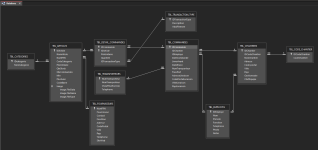Deke Hikari
New member
- Local time
- Today, 17:04
- Joined
- Jan 20, 2025
- Messages
- 3
Hello everyone.
I'm building my database at the moment but I seem to mix things up. What I would love to see is the structure of my database (I'm struggling with that one :s) and I can take it from there.
Situation: my company has a warehouse where the goods (mostly traffic signs) are stored. We deliver our goods to different temporary work sites. When the sites don't need the goods anymore they send it back to the warehouse.
What I need in that structure:
This is what I made so far but I think I'm doing it wrong.
Thanks a lot in advance and should you have any quastions do not hesitate to let me know ;-)
Greets,
David.
I'm building my database at the moment but I seem to mix things up. What I would love to see is the structure of my database (I'm struggling with that one :s) and I can take it from there.
Situation: my company has a warehouse where the goods (mostly traffic signs) are stored. We deliver our goods to different temporary work sites. When the sites don't need the goods anymore they send it back to the warehouse.
What I need in that structure:
- Orders (reserve goods without modification on the quantity on hand) and deliveries (modifies the quantity on hand) from and to the worksites.
- Stock modifications like inventories (broken, stolen, ...)
- Orders to and deliveries from Suppliers
This is what I made so far but I think I'm doing it wrong.
Thanks a lot in advance and should you have any quastions do not hesitate to let me know ;-)
Greets,
David.

